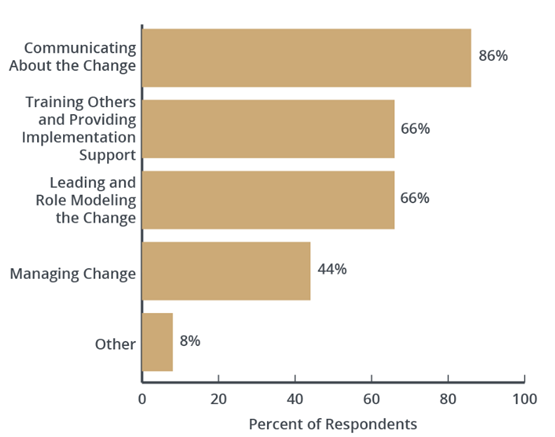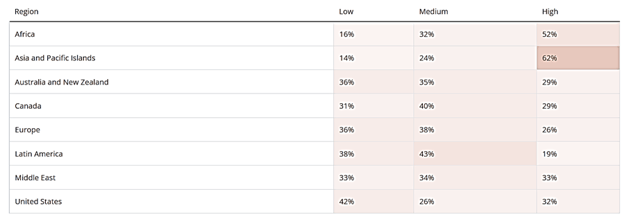According to Prosci's Best Practices in Change Management research, 66% of the organisations with current change projects reported that changes happening in their organisation impacted more than one division or department, while 89% of them impacted business processes. Most of these projects are enterprise-wide changes, and can potentially be escalated to high risk if not managed properly.
These statistics are alarming. They indicate that if we do not deploy adequate resources to managing a change, we could launch, but we might not land well. Or we could end up with a well-managed change in one region, but in others it might not be so successful.
In many of these organisation-wide changes, the deployment of a Change Agent Network to drive adoption and usage, as written previously by my dear colleague Quentin Orsmond, will be crucial, especially if the change affects different regions or offices. Quentin has already expounded upon the importance of the Change Agent Network (CAN) in another article, but in this blog, I will be talking about another perspective - how do we maintain them and keep them engaged?
In this blog we'll cover:
- What is a Change Agent Network?
- What do Change Agents do?
- How to keep your Change Agent Network engaged
- Want to learn how to effectively manage change in your organisation?
First, let us establish some definitions.
What is a Change Agent Network?
In Prosci's study on the Change Agent Network in 2016, respondents were asked how they defined a Change Agent Network. Their answers can be divided into four categories:
- Body of change champions - Participants defined change agent networks as a body of change champions who are formally trained in change management methodologies. These people acted as liaisons between the project and the business. These individuals were placed locally on the project team or in strategic positions within the organisation to provide support and awareness of the change.
- Impacted Individuals - Participants defined change agent networks as comprised of individuals who were impacted first by the change. These individuals usually held positions as either managers or local agents and were impacted directly by change.
- Hierarchy Structure - A hierarchy structure of individuals across multiple levels of the organisation made up change agent networks. This system ensured alignment and consistency of change objectives.
- Influential leaders - A number of participants expressed that their change agent networks constituted groups of leaders who influenced and drove change. By providing guidance and direction, leaders with influence set an example of the importance of change.
What is a Change Agent Network?
The below chart shows the key areas of value that the Change Agent Network brings to a change project. According to the findings, more than half reported that their change agent networks were responsible for communicating about the change, training others, and leading and role modelling the change.
 Source: Prosci Best Practices Research
Source: Prosci Best Practices Research
Last year, I provided coaching to a practitioner (let's call him Jack) who came through our Change Management Practitioner Certification Programme. He belongs to a company which is a global provider of medical technologies, with operations in more than 30 countries, and he was tasked to roll out global digital transformation.
We spoke in detail about setting up a Change Agent Network (CAN) in order to effectively bring about effective change across the different regions. Due to time constraints, Jack was unable to implement a phased rollout approach, but had to do a global rollout simultaneously. This was where the conversation became interesting - and together with Jack, we would like to offer five tips for keeping the CAN engaged.
Download: Prosci Best Practices Research 2020
.png?width=200&height=270&name=2020%20Best%20Practices%20(1).png)
5 Tips for Keeping a Change Agent Network Engaged
The following tactics were what Jack deployed, in selecting, engaging and building towards the Change Agent Network:
1) Individual Self Selection - Having a natural interest in the objectives of the change is key to being a great change agent. Jack worked with people who had a strong sense of ownership towards the project and as such were aligned to the planned future state. Thus they were committed to seeing the success of the change come through.
2) Strategic Selection of a Range of Experience - A formal network was formed by leveraging individuals within impacted business areas and groups. Influential individuals work well as ideal change agents. It is even more ideal to have a variety of experience, ranging from Director, to front-line employees, especially when the change needs to be influenced from the top as well.
3) Step Down the CAN After the Project has Achieved Outcomes - Jack and I have seen, over our change careers, that employees who have been perpetually appointed as Change Agents over period of 2 years or longer, were more likely to be deployed onto the next enterprise-wide project without time for pause and reflection.
Very often, the Change Agent role is a side gig on top of the BAU daily operations an employee performs. Unfortunately, many companies appoint the same people to act as change agents, project-after-project. The tactic here, is to nominate the person for one project, complete it well, step him/her down after outcomes are realised, and then appoint other employees for subsequent projects. This way, interested is sustained, and you ensure only the suitable employees with the right motivations for the proposed projects are selected.
4) Level of Knowledge - Change agents need to be experienced in change. Ideal candidates should be sufficiently experienced in projects and supporting changes, as well as enjoy a certain level of influence within their own regional office. Suitable certifications in Change Management (such as the Prosci 3-day Practitioner Certification) are also recommended for Change Agents to build Knowledge.
5) Tap into their Cultural Knowledge for their Localised Region - Lastly, setting frequent meetings with them using virtual platforms to get their advice on how to achieve the outcomes of change management, while navigating the cultural nuances of their localised region and office is necessary.
Change Agents are the best people to provide you with feedback on what would work and what would not. For example, from the table below, individualism scores are high in the United States (42%) while Asia generally scores highly in collectivism (62%). Within respective cultures and norms there are also different ways to deal with resistance. Should we run activities that allow for two-way communications in a public setting where we could have a one-to-one (having a nice drink and ambience helps and employee share more openly about his or her concerns surrounding the change)? What would work best for he selected region?

Source: Prosci Best Practices Research
Watch: How CMC Built an Organisations Change Management Capability
Want to learn how to effectively manage change in your organisation?
Prosci's research has noted the growing importance of the Change Agent Network. This is because of the increasing complexity of change, and the level of interconnectedness that is demanded on the global stage.
Engaging the right Change Agents can add credibility, critical knowledge and proven outcomes to your change effort. Increase your own ability to deliver project outcomes by identifying and effectively partnering with the right folks in your organisation. Explore how frequently change agents are used on change projects, the primary benefits and drivers for engaging them, and the most effective ways to leverage on their regional proximity in change efforts.
If you would like to learn more about how to activate change networks and how to manage change in your organisation, take a look at the 3-day Prosci Change Management Practitioner Programme.
